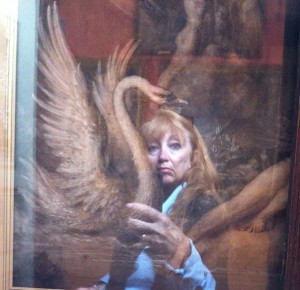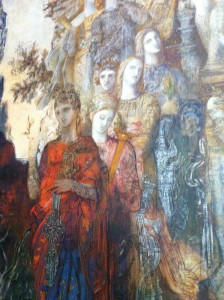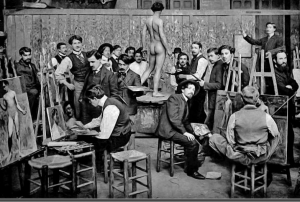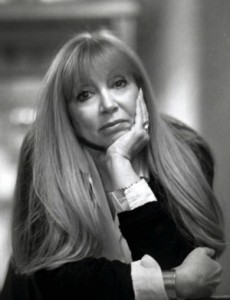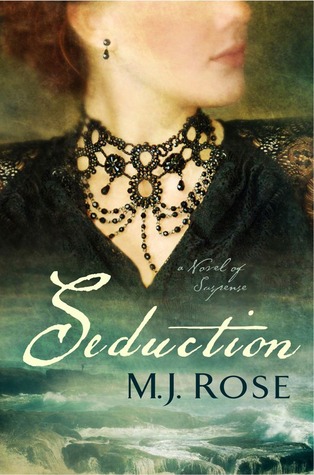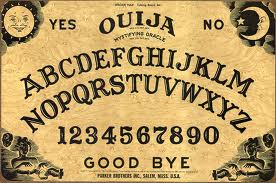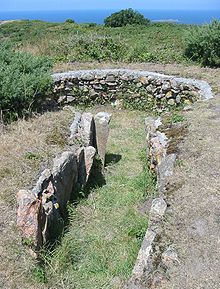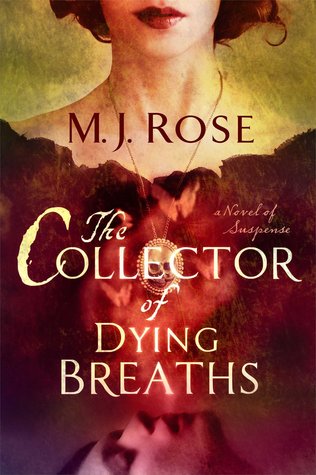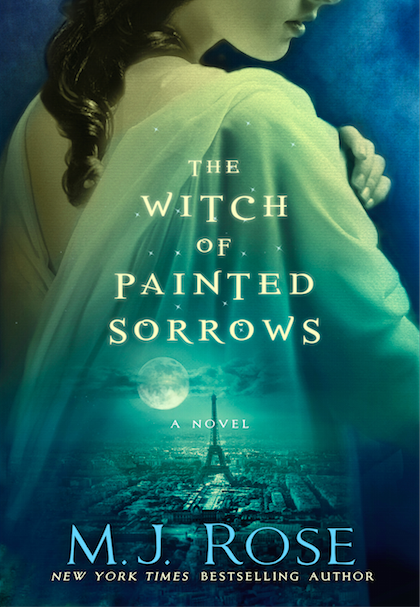 Spellbinding. Entrancing. All-encompassing. The Witch of Painted Sorrows by M.J Rose was an impossible to put down Gothic mystery. Have you ever had a desire, a passion so great that it literally over took you…consumed you? This is what it’s like reading this novel of an artistic love affair like no other, set during the Belle Epoque era in Paris, France. When Sandrine Salome flees New York to her grandmother’s Paris home trying to escape her dangerous husband, unbeknownst to her she is reentering into an ancient long cast spell. And what she discovers at her grandmothers renowned lavish mansion, home to an extensive art collection and tantalizing salons will far surpass her wildest imaginings and fears. Her grandmother insists she can’t stay in Paris, and heaven forbid not in her now closed up for “renovations” mansion. Sandrine defies her grandmother’s warnings, coming into contact with the intriguing residence renovator architect Julien Duplessi. Together Sandrine and Julien explore the haunts of the house and discover its hidden secrets and uncover intoxicating pieces of the past, and a witch legend of sixteenth-century courtesan, La Lune, in which Sandrine becomes possessed. La Lune opens Sandrine up to life’s dark and erotic side as she and Julien delve into the world of artist and muse, the Paris night world, and forbidden occult underground culture as Sandrine careens into her deepest desires and the gifts of the dark or are they curses of the night?
Spellbinding. Entrancing. All-encompassing. The Witch of Painted Sorrows by M.J Rose was an impossible to put down Gothic mystery. Have you ever had a desire, a passion so great that it literally over took you…consumed you? This is what it’s like reading this novel of an artistic love affair like no other, set during the Belle Epoque era in Paris, France. When Sandrine Salome flees New York to her grandmother’s Paris home trying to escape her dangerous husband, unbeknownst to her she is reentering into an ancient long cast spell. And what she discovers at her grandmothers renowned lavish mansion, home to an extensive art collection and tantalizing salons will far surpass her wildest imaginings and fears. Her grandmother insists she can’t stay in Paris, and heaven forbid not in her now closed up for “renovations” mansion. Sandrine defies her grandmother’s warnings, coming into contact with the intriguing residence renovator architect Julien Duplessi. Together Sandrine and Julien explore the haunts of the house and discover its hidden secrets and uncover intoxicating pieces of the past, and a witch legend of sixteenth-century courtesan, La Lune, in which Sandrine becomes possessed. La Lune opens Sandrine up to life’s dark and erotic side as she and Julien delve into the world of artist and muse, the Paris night world, and forbidden occult underground culture as Sandrine careens into her deepest desires and the gifts of the dark or are they curses of the night?
Throughout this novel are stunning sound related metaphors and similes like nothing I’ve ever encountered.The prose is beautiful and evocative with captivating Art Nouveau historical details and exposes one to nineteenth-century French Symbolist painter Gustave Moreau and his magical works.The love story is intense, allowing the reader a rare experience of what it’s like to be consumed by the desire to create and allows you to feel the explosive and dangerous potential of obsessive passion. You will be left speechless at how the story unfolds and what it explores, truly a masterpiece of storytelling!
Unlock the door, turn the canvases around, let the love spell come over you…lose yourself to La Lune…
SRDS: What compelled you to include art and artist in your historical novel?
MJR: I was six when I took my first art class. It was at the Metropolitan Museum of Art in New York City. And I’ve never stopped studying or wanting to be painter. When I visit a city the first place I go to is the museum. I am more at home looking at paintings and sculpture than doing anything including reading. Of every subject I am always drawn first to art and artists.
SRDS: What drew you to your specific visual art medium, artwork, and/or artist?
MJR: I was in Paris and visited an exhibition of a late sixteen century female painter, Artemisia Gentileschi. She was a rarity and anomaly, a woman artist who succeeded despite enduring so much. While there was no suggestion she dabbled in the occult, her resilience and determination inspired me to create a woman named, La Lune, a sixteenth century courtesan, the muse of a great artist who becomes a great artist herself.
While she isn’t the main character in the book, she is at its heart. It’s her descendant, Sandrine, who three hundred years later, who comes to Paris and has to overcome society’s rules and mores in order to live out her passions — as a woman and an artist.
SRDS: What unique historical objects and/or documents inspired the story?
MJR: It was the period itself. Belle Epoch Paris was a melange of many different styles of art and poetry and philosophies. The old guard still ran the salons. Impressionism battled for wall space with symbolism. Cults sprang up around occultism, spiritism and inspired artists and writers. All that diversity fascinated me. I spent a long time at the Gustave Moreau museum, looking not just at his masterpieces, but examining the hundreds of sketches hidden away. I searched out Art Novueau buildings and visited museums to look at the work of the Nabis whose name itself which came from the Hebrew word for “prophet,” evoked both their mysticism and determination to develop a new artistic language.
SRDS: Is there an art history message you’ve tried to highlight within the novel?
MJR: As hard as it is for me to believe, today, in 2015 women still don’t have full equality, not in our society, not in the art world.
I wanted to use another era to illustrate the struggles and the efforts that women have made to succeed the arts. To show that sometimes to get what we want, we have to tap into our inner witch. Nice girls often do finish last or they waste away bored to death. To me living a life without reaching outward and inward for ours dreams, no matter how impossible is seems, is a waste of our souls.
SRDS: What do you think readers can gain by reading stories with art tie-ins?
MJR: I think being able to look at the art that inspires the book it ads a dimension to the story.
 About the author: New York Times Bestseller, M.J. Rose grew up in New York City mostly in the labyrinthine galleries of the Metropolitan Museum, the dark tunnels and lush gardens of Central Park and reading her mother’s favorite books before she was allowed. She believes mystery and magic are all around us but we are too often too busy to notice… books that exaggerate mystery and magic draw attention to it and remind us to look for it and revel in it.
About the author: New York Times Bestseller, M.J. Rose grew up in New York City mostly in the labyrinthine galleries of the Metropolitan Museum, the dark tunnels and lush gardens of Central Park and reading her mother’s favorite books before she was allowed. She believes mystery and magic are all around us but we are too often too busy to notice… books that exaggerate mystery and magic draw attention to it and remind us to look for it and revel in it.
For more about M.J’s work visit blog “Museum of Mysteries”: http://www.mjrose.com/blog/ Facebook https://www.facebook.com/AuthorMJRose
To buy: The Witch of Painted Sorrows
Join us here April 25th for an interview with Lisa Brukitt, author of The Memory of Scent!
Interview posting schedule:
2014: August 30th Susan Vreeland, Lisette’s List (new release), September 27th Anne Girard, Madame Picasso (new release),October 25th Yves Fey, Floats the Dark Shadow, November 29th Mary F. Burns, The Spoils of Avalon (new release), December 27th Kelly Jones, The Woman Who Heard Color
2015: January 31st Heather Webb, Rodin’s Lover (new release), February 28th Alyson Richman, The Mask Carver’s Son, March 28th Maureen Gibbon, Paris Red (new release), April 11th M.J Rose, The Witch of Painted Sorrows (new release), April 25th Lisa Brukitt, The Memory of Scent, May 30th Lisa Barr, Fugitive Colors, June 27th Lynn Cullen, The Creation of Eve, July 25th Andromeda Romano-Lax, The Detour, August 29th Frederick Andresen,The Lady with an Ostrich Feather Fan, September 26 Nancy Bilyeau, The Tapestry (new release), October 31st Laura Morelli The Gondola Maker
Join Facebook group “Love of Arts in Fiction”!

